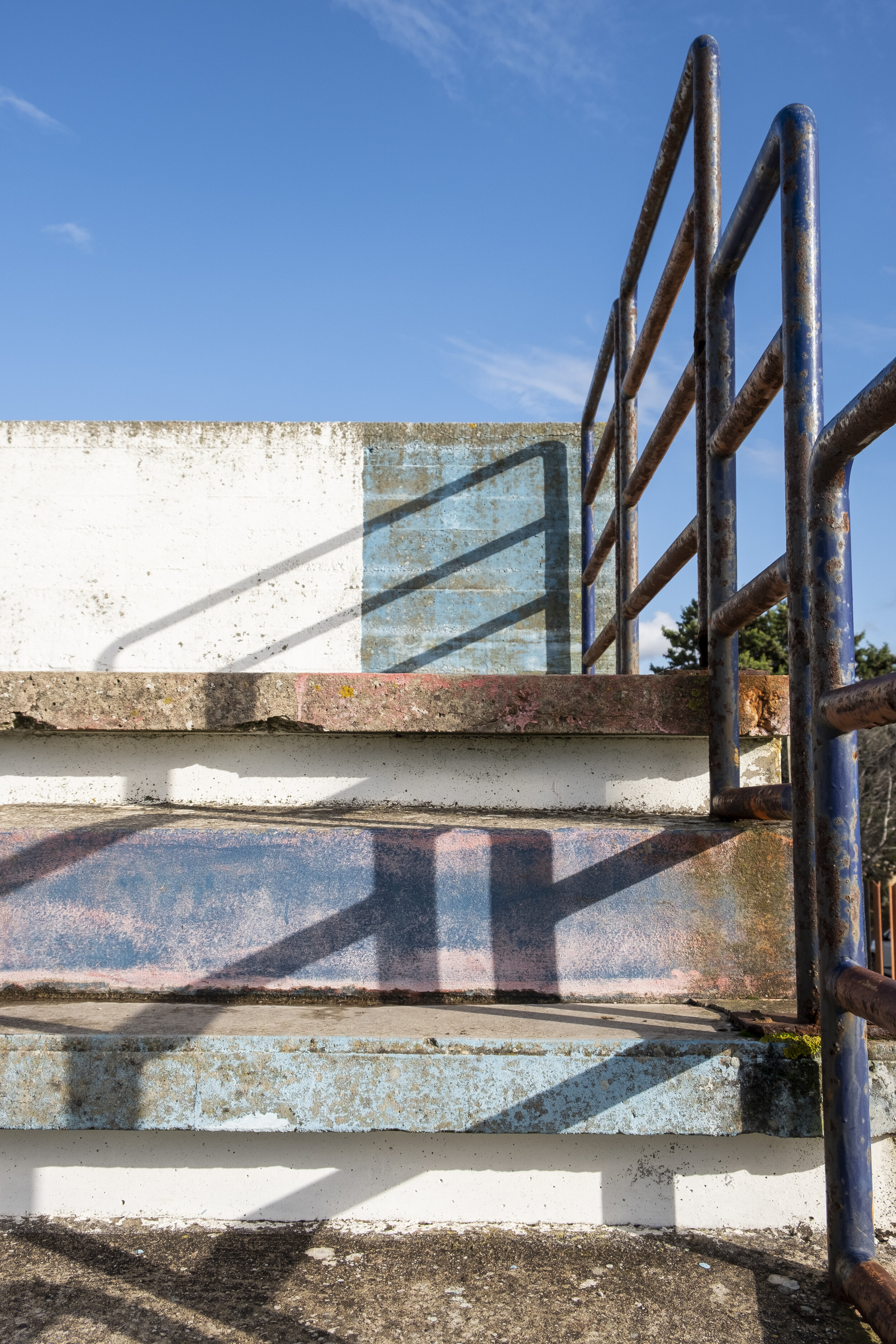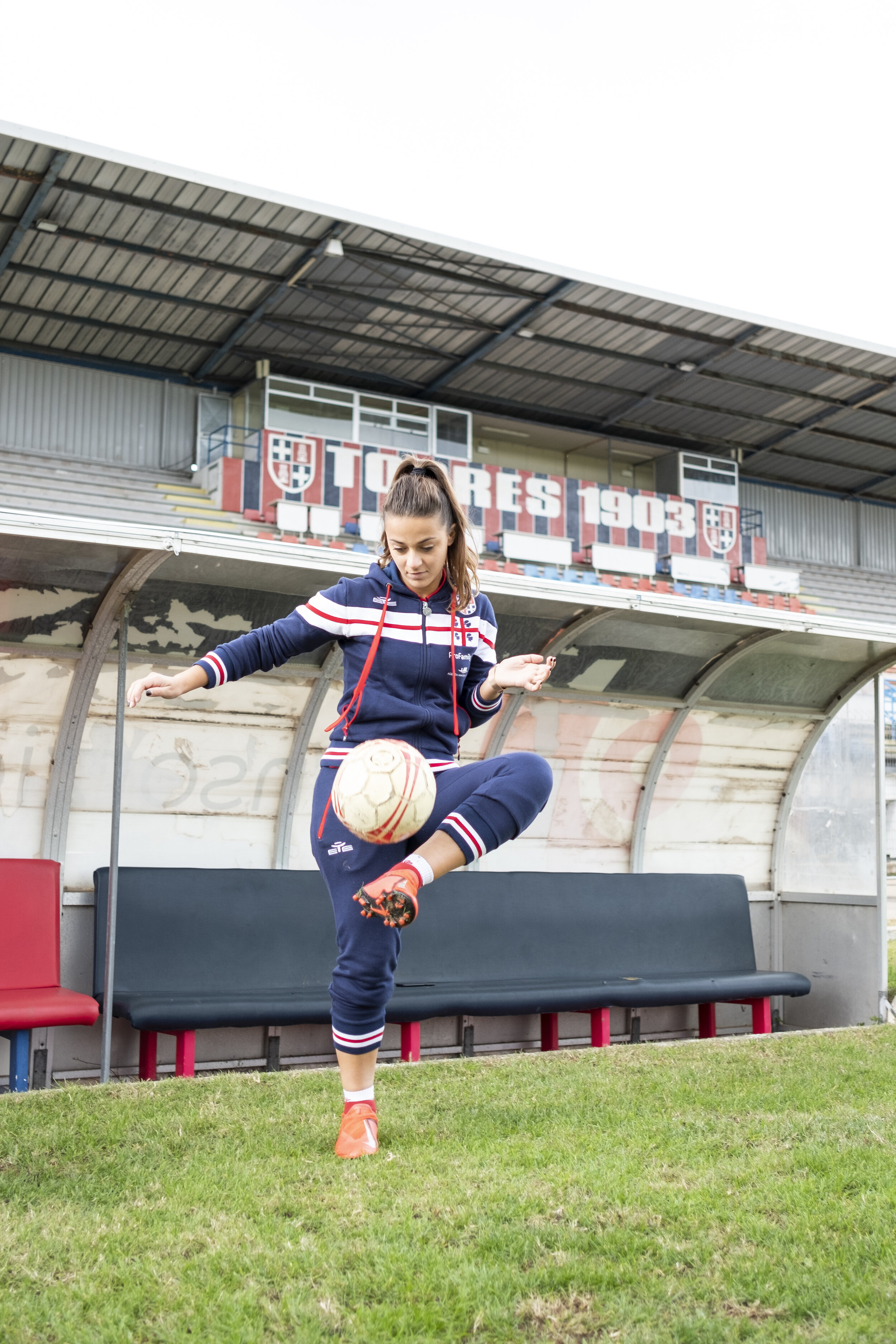Is Covid-19 yet another opportunity for FIFA to reconsider its financial approach to women's football?
The 2019 FIFA Women’s World Cup was a turning point for women’s football. A true milestone for sports and women. The visibility and increased following have opened the door to a new chapter and established a new standard for female athletes for years to come.
The level of performance and professionalism set by players from some of the most successful national teams has raised the bar for the discipline. They’ve defeated prejudice and skepticism towards the women’s game in some of the most stubborn countries and garnered attention from media that sparked an in-depth investigation of the subject. Something that had never been done before the Spring/Summer of 2019.
“No Rain, No Rainbow.” A Mantra of the players of AS Sassari Torres Femminile. Photography: Barley Nimmo
The sport’s potential shot up. An article published by the Football Association – the UK’s leading organisation – at the end of last year revealed that since the tournament held in France, 850,000 more women have committed to participating in competitions. With the retention of 23.1 per cent existing adult females participating in an 11-a-side or small-sided football competitively. These positive numbers are reinforced by off-the-pitch stats, showing that over the past few years, the public gained a newly-found interest in the game and started looking at women’s football as viable entertainment.
On March 17 2019, Atletico Femenino defeated Barcelona, 2-0 in front of 60,739 fans at the Wanda Metropolitano. A new record was registered, after 99 years! The last women’s game that saw a crowd like that was in 1920, just under a year before the FA banned women’s football. 53.000 people in Goodison Park in Liverpool to see the Kerr Ladies beat Saint Helens 4-0. The attendance in Madrid was the first time a club game topped that historic number. That’s without including the 330,000 people who tuned into the match on free-to-air-channel Gol TV (source: The Guardian).
Shortly after, Italy gave sport’s media around the world a record to talk about. For the first time, Juventus ladies had access to Allianz Stadium, where they beat Fiorentina 1-0 in front of an audience of 39,000. An unprecedented figure for the country. The tickets were given out free of charge. However, the hundreds of fans who travelled from Florence to Turin to watch the game are the living proof that an audience would be willing to pay.
AS Sassari Torres Femminile training grounds, near Usini. Photography: Barley Nimmo
The many headlines, brand sponsorships and focus on the game pulled in by these extraordinary numbers have provided a platform for female athletes to finally be seen as national heroes. Their commitment to fight for gender equality has made them spokespeople for the pay-gap movement by default.
On July 7 2019, seconds after referee Stephanie Frappart blew the whistle sanctioning the title of World Cup Champions to the United States over The Netherlands, for the second time, the crowd broke off into an emotional chant. It demanded equal pay for the girls celebrating the much-deserved cup. ‘Equal pay! Equal pay!’ echoed at the Stade de Lyon as Megan Rapinoe and her teammates waved the trophy in the air.
Upon returning home to America, the team filed a lawsuit against the local federation requesting to waive pay discrimination and better working conditions in the women’s game. The same happened in Australia, another country where the success of female footballers overshadows the men’s as proven by FIFA’s grading system – the Matildas rank 8th in the world against the 44th place held by the Socceroos. Finally, the disparity was settled last fall with the breakthrough of Sam Kerr’s team in the sports court after reaching a deal with the Federation. Both national teams will now receive the same benefits moving forward.
Photography: Barley Nimmo
Not all that shines is gold, unfortunately. Despite outstanding achievements, women’s salaries are still much lower than men. A whopping 326 times lower, as stated by research by Four Four Two and published on their website last year in an article discussing the pay gap in top players. The two-time Olympic medalist and Sky Blue FC’s midfielder Carli Lloyd is considered the highest-paid female footballer in the world with a yearly salary of €480,000, against the ludicrous €131 million-cheque collected by Argentinian player Lionel Messi.
According to the Global Football Employment Report, the yearly survey issued by the FIFPRO (the world’s players union), the average monthly salary for a female footballer was less than $1000, in 2017. This means that to reach a liveable wage, female footballers are still relying on game bonuses and secondary hustles. Like Fliss Gibbons, the 25-year-old Brighton & Hove Albion striker, who before gaining professional status in 2018 juggled a Physical Education teaching job and her club’s endeavours.
Professional status has yet to be granted to female footballers in many countries, like Iceland, despite the sport’s growing popularity amongst women. Even the most advanced federations – the ones that look at the women’s game through a progressive lens, elevating players from amateurish to pro – are still working on the doughy fresh concrete that composes their foundations.
A player from AS Sassari Torres Femminile takes a break during a training session. Photography: Barley Nimmo
The historical lack of media representation and the obsolete TV rights and sponsorship bundles are other hurdles in the race towards the profitability and subsequent financial support behind the game. The ruling organisations have a hard time evaluating the sport’s real business value. Gate culture, aka the habit of going to the stadium to see a match live and everything that comes with it, plays a minimal part in the club’s revenue. Sponsor logos and campaigns, as well as TV ratings, make up the bigger financial reserve. Women’s teams have little access to negotiating their own deals, which are often arranged as an addition to their male counterparts’. They are also behind in opportunities when it comes to suitable training grounds, professional staff, and transport, making it hard to achieve exceptional results leading to a wider audience.
Clubs with a bigger financial power have the privilege to shine across newspaper titles. But if we look at countries where women’s football is disregarded, we are brought back down to reality. Take AS Torres, a small club based in Sassari, a little city a few km off the Northern coast of Sardinia, Italy’s second-largest Island. Before the league was granted professional status by the FIGC (Italy’s football federation), AS Torres was considered, and still is, the most consistent and successful team in the history of Italy’s women’s football.
They won seven Scudetti and eight Italy Women’s Cups and became the first team to represent Italy in the UEFA’s women’s tournament. Some of the most successful names in the industry graduated from AS Torres. Rita Guarino, manager of the country’s national team, and Pamela Conti, Venezuela’s manager, just to name a few. Despite its unprecedented results and top of the league position, the team was relegated to fourth division after finding itself in massive debt after being subsumed by the men’s team in 2015.
The girls of AS Sassari Torres Femminile arriving to the training grounds in Using, Italy. Photography: Barley Nimmo.
Barley Nimmo, a British photographer whose work focuses on the less popular side of football culture and the lower leagues, dedicated some time to following and documenting AS Torres’ devotion to the game in 2019. After being brought to the impervious Island, with the aim to discuss its proximity to Corsica and the supposed football rivalry between the two: “I knew that this was a story I had to tell” he said passionately.
His first contact with the team happened at a local supermarket where the women were protesting against domestic violence, proving their influence and connection to the community. Nimmo’s prime source of information was Fabrizio Contini, the new head of marketing and the man in charge of finding sponsorship to fund the club which despite its local popularity and fanbase, struggles to make ends meet.
The geographical location of Sassari is another obstacle in the climb back to Serie A. The club relies on raising money for their travels to games located on the mainland. The team’s resilience and motivation towards reaching first division status again make up for the budgetary uncertainty as they fly high at the top of the table – that was at least until the Covid-19 outbreak hit. The crisis has increased the risk of failure for AS Torres, as the rest of the league.
The girls of AS Sassari Torres Femminile on a training session, coached by Salvatore Arca. Photography: Barley Nimmo
Valentina Congia in action. Photography: Barley Nimmo
The suspension of championships worldwide, starting with Italy, has affected the status of the football industry at large, putting financial struggle at the forefront of the emergency. Whether activities will resume openly or not before next season, even top clubs face millions in losses. A report released at the beginning of the league’s halt by Juventus and Italian Bank IMI foresaw a default of near 110 million.
Again, FIFPRO stepped in with a new report to make sure female footballers were not left out of the conversation. Currently, they face an existential threat and the governing bodies from across the world are stepping up and protect players while aspiring to build a more solid foundation. But as top-flight clubs such as Reading start furloughing players and even the men face pay cuts and contract revision, will the local federation in each country take the opportunity to relook and reshuffle its practice? Will they find more sustainable business models for both men and women? Can the men learn how to be resilient and willing to sacrifice from the women’s game?
Instability isn’t new to women’s football. The majority of players most likely have had experience with clubs on the verge of bankruptcy or uncertainty around wages. Hopefully, now that the problem is a global one, rather than affecting only the marginalised, the FIFA and governing bodies will take action. We hope they use this opportunity to find ways to stabilise clubs and close the massive wealth gap between the men’s and women’s game.
Words: Naomi Accardi
Photography: Barley Nimmo







